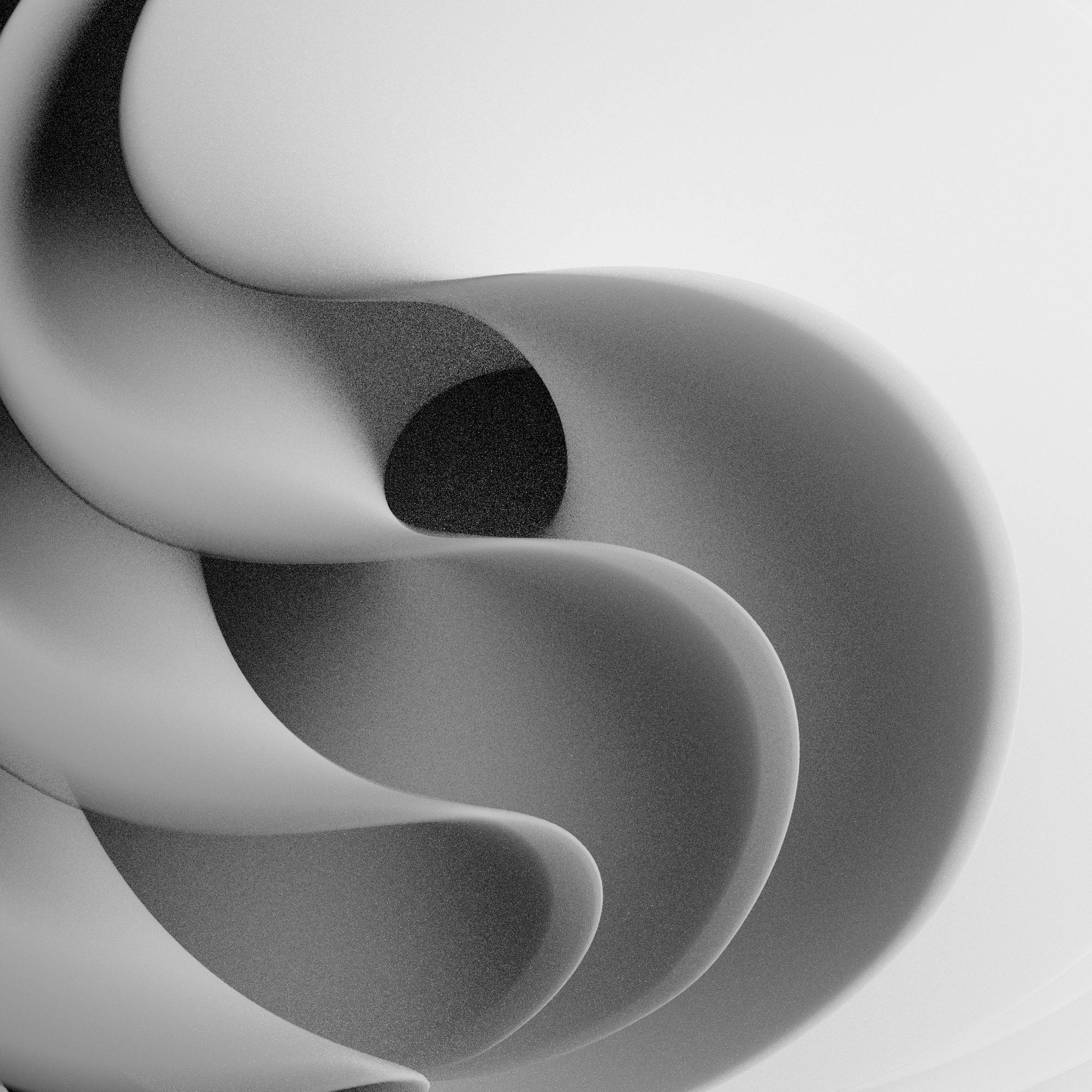SCAD Sensorium
An Interactive Materials Library for the SCAD School of Design
An Interactive Materials Library for the SCAD School of Design
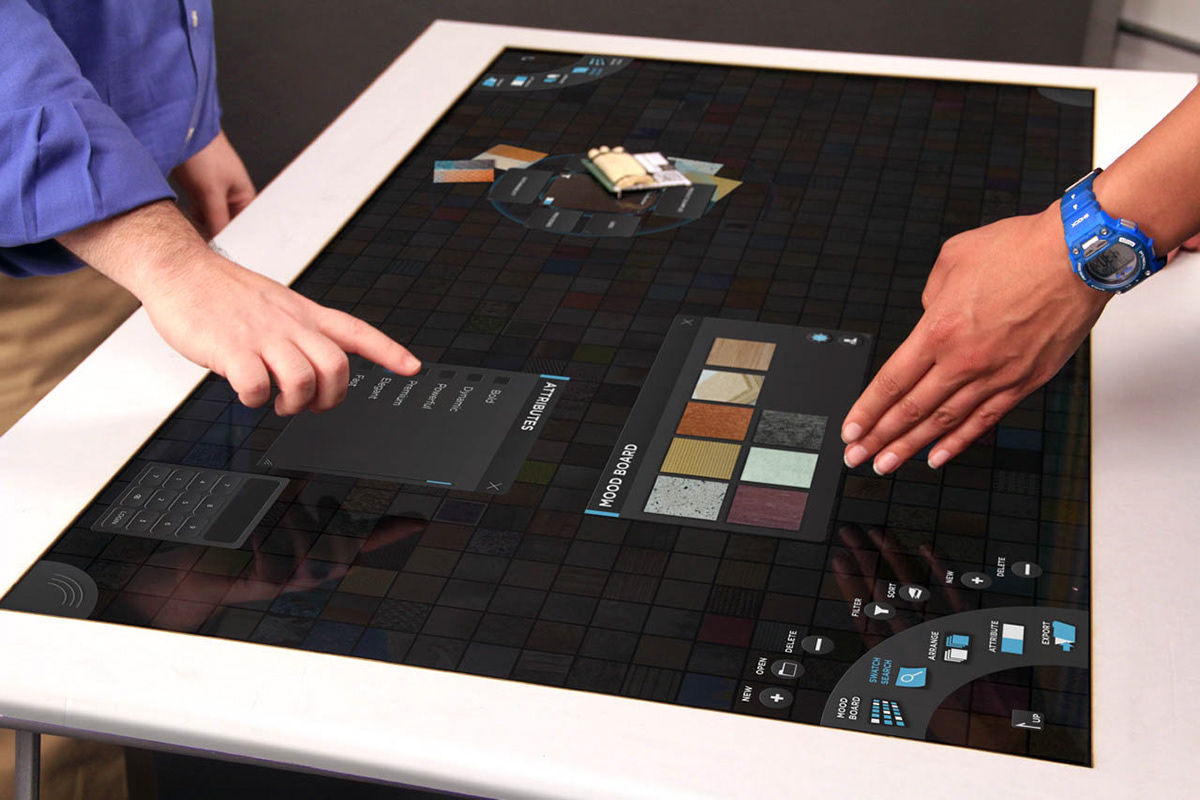
Tools are needed to inform designers of the sensorial, economic, and sustainable implications of materials. In the course of ten weeks, our team developed the information architecture, designed the GUI, and prototyped the physical and digital interfaces for a material library at SCAD’s School of Design.
Final Simulation
The Process
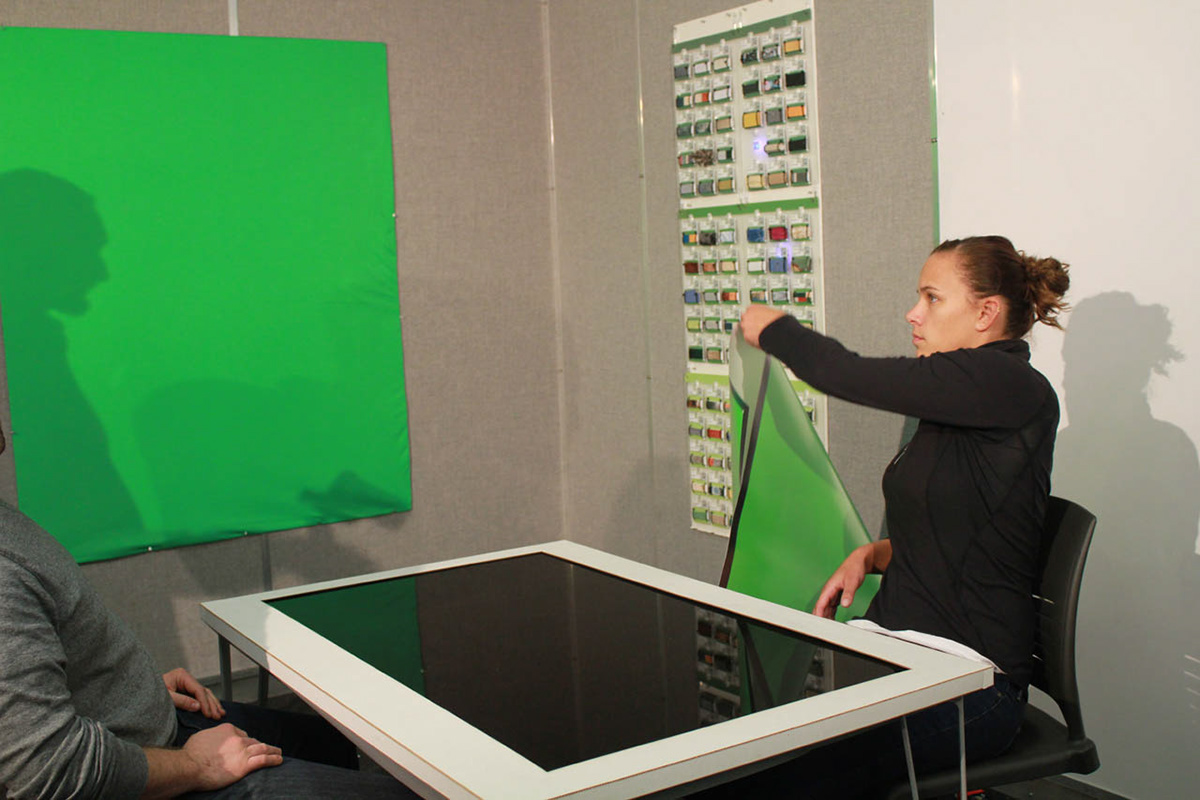
Interactive Table Team (Tim Tocci, Allycia Jones): Given the constraint of a touchscreen table, the team designed a GUI which would serve not only as a search platform but also as a demonstration showpiece for the space. Considerations included multiple user scenarios, serendipitous discovery of related materials, data visualization for material information, creation of material boards, and links to physical swatches.

Looking at the tools used for discovering physical environments, the team pursued a compass metaphor which led us in turn to examine magnetic fields. The emotional “attribute magnets” emulate real-world magnetic applications for sorting ferrous and nonferrous materials.

Corner menu interface with Attribute Magnets
Midterm interactive simulation progress: multiple user workstation scenario.
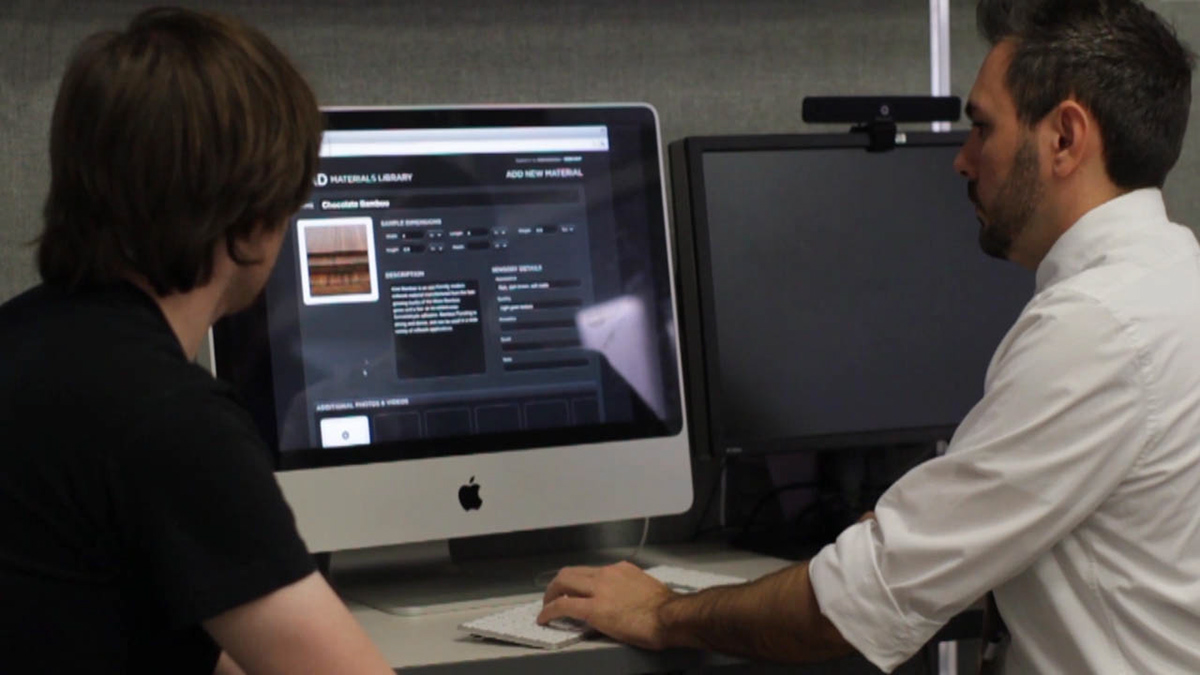
Database Team (Kailen Wilcox-Nordhausen, Wyatt Gallager): Using a web-based platform, the team designed the administrative side of the library interface. Considerations included achieving desirability and usability while submitting materials, categorizing samples, and curating submissions.
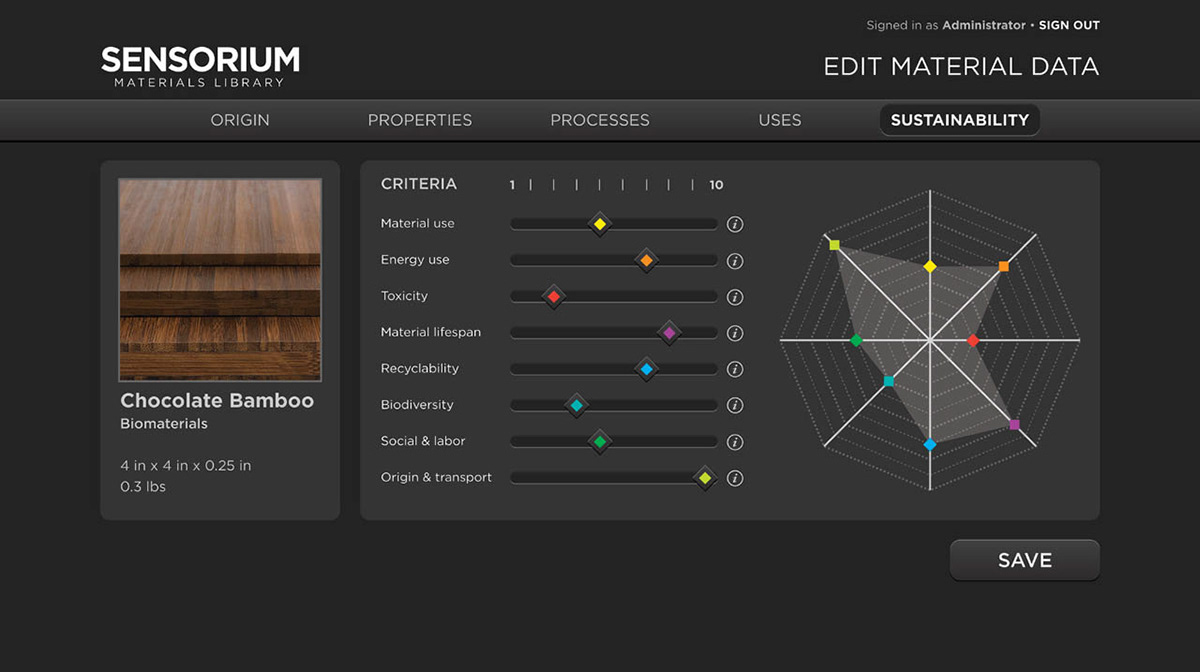
The administrative interface encourages users to assess the sustainability criteria of each submission as well as physical properties, manufacturing processes, and existing uses.
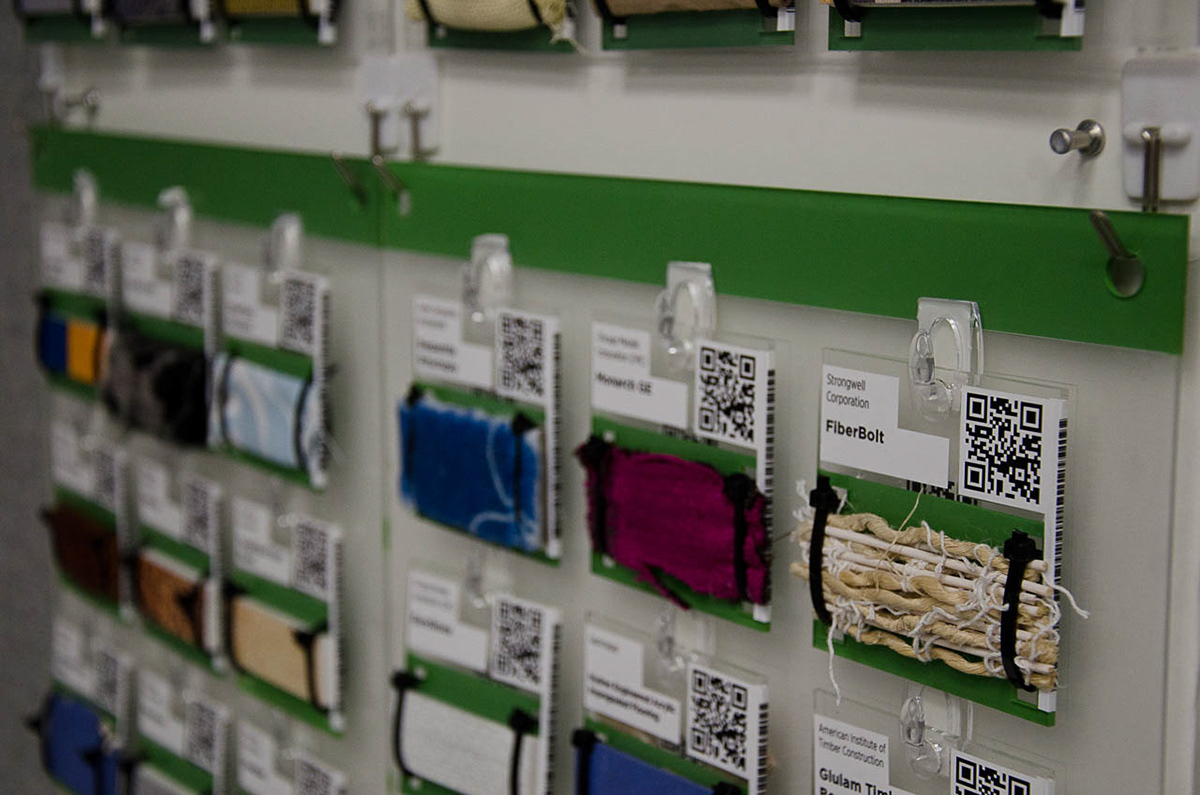
Environment Team (Louis Finkelstein, Brent White, Alix Morle): Examining the environment, the team designed the organization and storage systems for material samples and swatches. Considerations included container design, sample organization, and material swatch display and interaction systems.
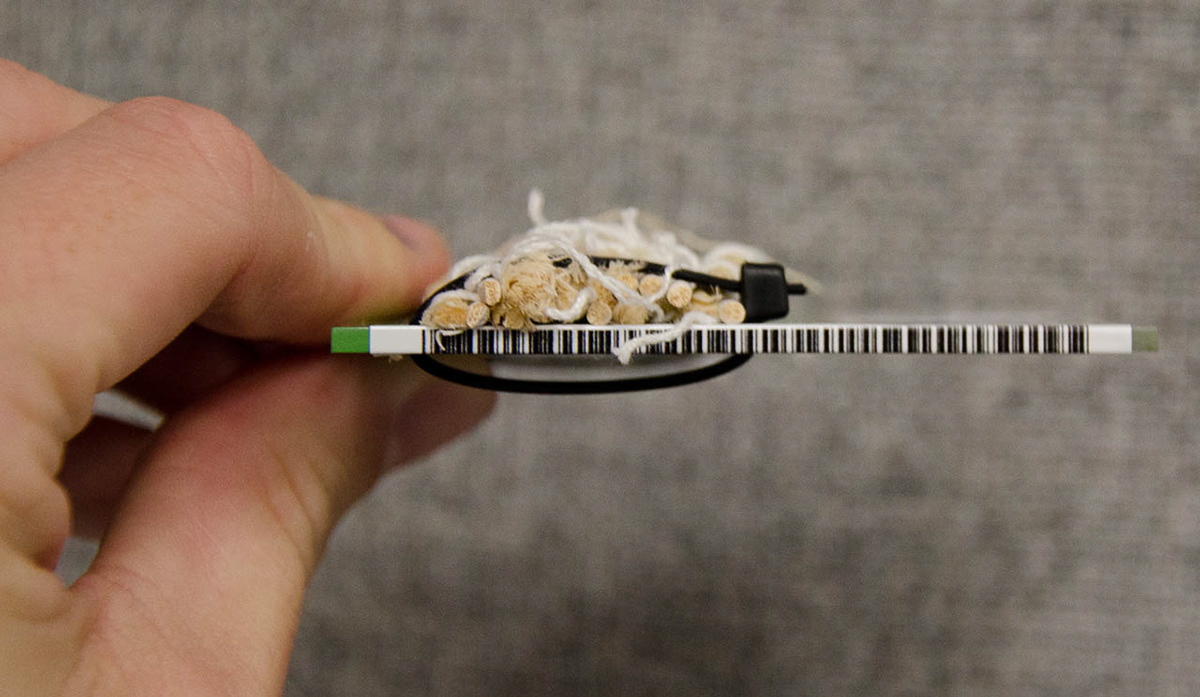
Barcodes on the side of swatch samples are read at the edge of the Utouch screen.
Value Proposition
The SCAD Sensorium offers students, faculty, industry partners, and peer institutions an immersive, engaging, and dynamic experience for discovering and evaluating materials. Unlike existing libraries, the Sensorium encourages active engagement and discovery while simultaneously providing detailed material property information and sustainability evaluations, enabling informed material selections for innovative designs.
The SCAD Sensorium offers students, faculty, industry partners, and peer institutions an immersive, engaging, and dynamic experience for discovering and evaluating materials. Unlike existing libraries, the Sensorium encourages active engagement and discovery while simultaneously providing detailed material property information and sustainability evaluations, enabling informed material selections for innovative designs.
